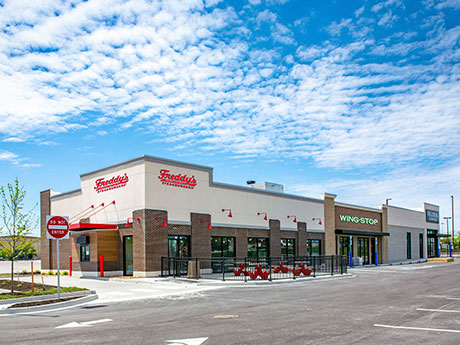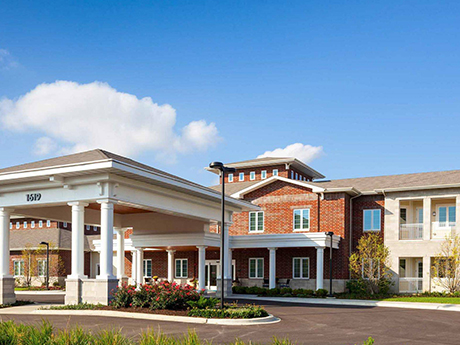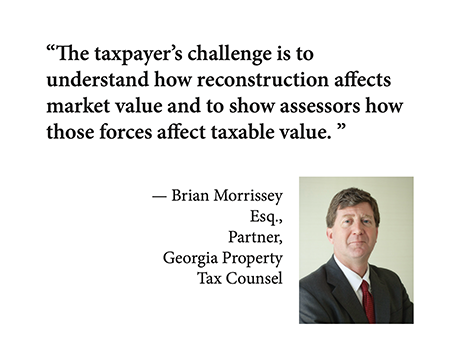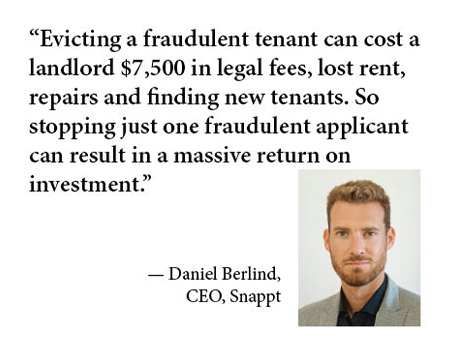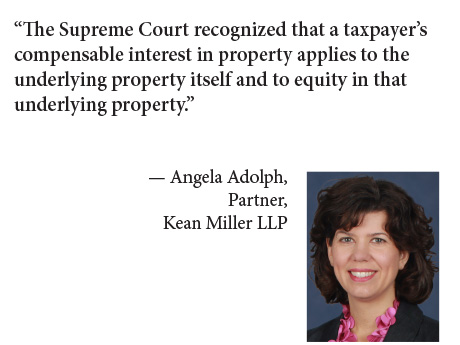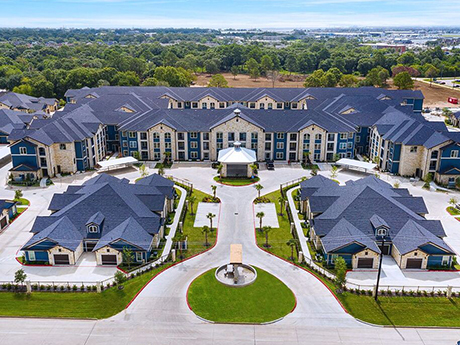WASHINGTON, D.C. — All indices in the National Multifamily Housing Council’s (NMHC) October 2024 Quarterly Survey of Apartment Market Conditions showed more favorable conditions this quarter, except for the Market Tightness (37) index. The survey’s Sales Volume (67), Equity Financing (63) and Debt Financing (77) indices all came in above the breakeven level of 50. “The 10-year Treasury yield fell 28 basis points over the past three months as the Federal Reserve enacted its first 50-basis-point cut to short-term rates,” says Chris Bruen, NMHC economist and senior director of research. “Survey respondents, in turn, reported more favorable conditions for debt financing for the third straight quarter and more available equity financing for the first time in two-and-a-half years.” However, elevated levels of multifamily deliveries resulted in the ninth consecutive quarter of “looser” conditions, especially in the South and Sun Belt markets, says Bruen. “Still, strong demand for apartments has meant that much of this new supply is getting absorbed,” he states. While close to half of respondents (46 percent) thought market conditions were unchanged relative to three months ago, 40 percent indicated markets have become looser, up from 27 percent in July. Fifteen percent of respondents reported tighter markets than …
Features
Content PartnerDevelopmentFeaturesIndustrialLeasing ActivityLee & AssociatesMidwestMultifamilyNortheastOfficeRetailSoutheastTexasWestern
Lee & Associates: Absorption Is Positive Across All Property Types According to Third-Quarter Report
Perhaps the most salient information within Lee & Associates’ 2024 Q3 North America Market Report pertains to the office market. The third quarter of 2024 ended nine continuous quarters of negative net absorption in the office sector. However, additional occupancy losses may be on the horizon for the office market, even as supply pressures ease for this property type. Positive retail news has led to positive industrial news, as rising demand for retail goods has bolstered tenant demand for industrial space just as additional industrial inventory is coming on line. Steady economic growth and continuing impediments to home ownership have created strong absorption in the multifamily sector. Rent growth and vacancy rates have largely plateaued. Lee & Associates has made their complete third-quarter report available here (with more detailed information broken down according to property type). Below is an overview of the strengths and challenges in the industrial, office, retail and multifamily sectors. Industrial Overview: U.S. Demand Spikes Industrial demand across the United States dramatically improved in the third quarter. There were 52.8 million square feet of positive net absorption in the country in the third quarter, a 76 percent jump from the same period a year ago and more than double the …
Amid a slump in investment sales volume, investors eagerly welcomed the Federal Reserve’s interest rate cut in September. The half-percentage point decrease was more than what many in the industry had anticipated, but Fed Chairman Jerome Powell recently indicated that additional rate cuts this year will likely not be as aggressive. The move by the Fed came after a spike in the federal funds rate from near zero in March 2022 to a range of 5.25 to 5.5 percent in July 2023 — a period during which the central bank raised the federal funds rate 11 times. Ultimately, the higher interest rate environment has led to a major slowdown in the sales volume of net lease properties this year, says Randy Blankstein, president of The Boulder Group based in Wilmette, Illinois. “Transaction volume is down approximately 60 percent from 2022 levels,” he says. In a net lease transaction, the tenant pays a portion or all of the taxes, insurance fees and maintenance costs for a property in addition to rent. For the 12-month period that ended in June, net lease investment volume across property types decreased by 34 percent from the same period a year ago to $35.4 billion, according …
By Taylor Williams Successfully executing a commercial conversion project is like hitting a six-leg parlay in sports betting: A lot of dominoes have to fall the right way, and without a little luck and outside help, it’s probably not happening. Take the embattled office sector. Even working professionals from outside the office real estate market who read the plethora of mainstream news articles recognize that it’s no small feat to turn those buildings into apartments. After all, when you’re dealing with thousands of tons of steel, glass and concrete in any capacity, things are bound to get messy. But theoretically, if the demand for more housing is there — and there can be little arguing that it is — and cities recognize that office usage has forever changed, then why aren’t we seeing more of these projects come to fruition in our cities? Setting aside the fact that office-to-residential conversions are incredibly expensive and fraught with risk even in the absence of a tight and constrained lending market like we currently have, there are still numerous reasons as to why these deals don’t proliferate. Does the city in question have flexible zoning? Does the community have a reputation for NIMBYism? …
By Jeff Shaw Freddie Mac and Fannie Mae — collectively known as the government-sponsored enterprises (GSEs) — have been on divergent paths in recent years when it comes to lending in the seniors housing sector. As specifically regards current activity, Freddie Mac is in the midst of a transaction rally, while Fannie Mae is enduring a wave of delinquencies fueled by seniors housing loans. The two lenders posted similar deal volumes in 2019 before the onset of the COVID-19 pandemic, with both closing over $3 billion in loans that year. While loan closings fell during and after that pandemic, the difference in scale of that drop is significant. While Freddie’s annual volume has not fallen below $2 billion, Fannie’s has stayed at or below $1 billion for four years running, and volume fell 50 percent from $1 billion in 2022 to $500 million in 2023. It’s not hard to see why Fannie Mae is doing less seniors housing business. The organization has a delinquency problem in the sector. Chryssa Halley, Fannie Mae’s CFO, called out the problem on the full-year 2023 financial results conference call. “Our multifamily serious delinquency rate increased to 46 basis points as of Dec. 31, 2023, …
Content PartnerData CentersFeaturesHospitalityLife SciencesLoansMidwestMultifamilyNortheastOfficeSelf-StorageSoutheastTexasWestern
C-PACE Maintains Appeal in Lower Interest Rate Environment
The Federal Reserve’s decision to begin aggressively hiking the federal funds rate in 2022 threw the commercial real estate market into turmoil. Property investors found it difficult to refinance much cheaper short-term loans that were often used to renovate or develop properties. However, the interest rate spike greatly enhanced the viability of commercial property assessed clean energy (C-PACE) financing, a type of loan that becomes an assessment that borrowers pay along with their tax bill. The program emerged more than a decade ago and generally pays for energy, water and seismic resiliency upgrades in new construction and rehabs, including retroactively. As a result, developers embraced C-PACE as they sought ways to pay down debt to secure new financing or loan extensions and modifications. Sponsored: A smarter way to finance your next CRE project – PACE Loan Group Now that the Federal Reserve has reversed course with its 50-basis-point federal funds rate reduction in September — and with Wall Street anticipating additional rate cuts before the end of the year — will C-PACE demand start to cool? Don’t count on it, says Rafi Golberstein, founder and CEO of PACE Loan Group, a direct lender of C-PACE financing based in Minneapolis, Minn. …
The conversion of obsolete office buildings to new uses is a growing trend in many markets, especially in dense urban centers. Unfortunately, properties under reconstruction can continue to incur hefty property tax bills, even when the asset lacks a rent stream to help offset the owner’s costs. The right arguments can help these taxpayers reduce their property tax liability during a building conversion, however, and set the stage for an accurate, fair assessment of the asset’s adjusted market value under its new use. The taxpayer’s challenge is to understand how reconstruction affects market value and to show assessors how those forces affect taxable value. Obsolescence and opportunity Demand for office space was already faltering when the COVID-19 pandemic accelerated occupancy declines. Since then, remote work and space sharing among office workers has further reduced the amount of offices companies need, with many tenants returning space to property owners as leases mature. Normally, appraisers value multitenant office buildings under an income approach, attributing rental income per square foot as a starting point for valuation. When the space loses market viability, the per-square-foot rent variable declines and lowers the net valuation for tax purposes. Expanding this result over an entire central business …
Scammers lurk in the background of virtually every industry, and the multifamily sector is no exception. Some renters will leap at the chance to exploit loopholes in the system and take advantage of unprepared landlords. “As a baseline definition, we classify rent fraud as any act of intentional deception by a renter to deceive the property owners to gain financial or personal benefit,” says Josh Albrechtsen, senior vice president and general manager of front office solutions at RealPage. “Fraud is evolving constantly. This is not a one-and-done problem solve. The trends and behaviors of the fraudsters indicate an ongoing chess match.” Unfortunately, renter fraud is increasingly common. In January, the National Multifamily Housing Council (NMHC) released the results of a fraud survey, which collected responses from 75 property owners, developers and managers. A whopping 93 percent of survey respondents stated that they had experienced fraud over the past 12 months. Additionally, 71 percent of respondents had encountered increased fraud activity in the last year. Snappt, which specializes in assisting apartment property managers with document fraud detection, reported that of the nearly 3.3 million application documents its platform scanned in 2023, approximately 177,000 were fraudulent. That represents an average fraud rate …
By Angela Adolph, Esq. of Kean Miller LLP Federal courts rarely adjudicate property tax matters, which have traditionally been the province of state courts. In May 2023, however, the U. S. Supreme Court issued a unanimous decision in a case that squared state property tax law up against the Fifth Amendment takings clause, which prohibits taking private property for public use without just compensation. Taken for taxes The events leading to Tyler vs. Hennepin County began in 1999, when Geraldine Tyler purchased a Minneapolis condominium that she occupied until she moved into a seniors housing community in 2010. Tyler retained ownership of the condominium but failed to pay property taxes on it for several years, resulting in approximately $2,300 in unpaid taxes and $13,000 in interest and penalties. Acting in accordance with Minnesota tax forfeiture procedures, Hennepin County seized the condominium and sold it for $40,000. This extinguished Ms. Tyler’s $15,000 tax debt, and Hennepin County kept the remaining $25,000. Minnesota’s tax forfeiture procedure required the county to give the delinquent taxpayer adequate notice of the tax sale; notably, the procedure lacked a mechanism for a delinquent taxpayer to assert a claim to any sale proceeds remaining after paying off …
By Channing Hamilton ATLANTA — Investment markets have been tumultuous over the past year, with high interest rates and inflation impacting the flow of debt and equity across the commercial real estate industry. Last year, many investors and brokers chose to weather the storm and try to make it to 2025, when it was estimated that interest rates would begin to moderate. Recently, however, conditions seem to be improving in the seniors housing sector, where many investors are leaving behind the “survive till 2025” strategy that defined 2023. Editor’s note: InterFace Conference Group, a division of France Media Inc., produces networking and educational conferences for commercial real estate executives. To sign up for email announcements about specific events, visit www.interfaceconferencegroup.com/subscribe. “The relative positioning of seniors housing compared with other real estate asset classes has improved dramatically since last year,” said Blake Peeper, senior managing director of Bridge Investment Group, which is based in Salt Lake City. Peeper attributed his optimism in the seniors housing sector to a variety of factors. “Supply and demand dynamics are in our favor,” he explained. “There’s been a lot of confidence in future net operating income (NOI) growth, and the bid-ask spread has really narrowed. All of that …




